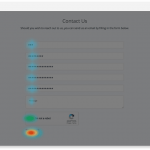So you have a website for your business or organization but maybe it’s not performing as well as you’d like it to. You rack your brain and sit down to brainstorm with your team on how you can make it better and try a bunch of different ideas out but nothing seems to be getting you the results you’re after. Well the first question you have to ask yourself is, are you just doing guesswork or are you making decisions based on what your audience is actually doing?
With the proper tools in place, you can start collecting valuable data that gives you an insight on how your audience is finding you, what content is the most important to them, how they’re using your interface and where you can make meaningful improvements that will yield more conversions and happier visitors.
In this blog we will discuss the following:
Google Analytics
The industry standard in collecting site metrics, GA is so pivotal in understanding how your site is being used but it can be overwhelming for first time users. If this is your first time using GA, these are some of the data points you’ll want to review.
Users and Sessions
This tells you how many visitors come to your site in a given time period and how many times they load it up. Users is a measurement of how many unique individuals come to your site and sessions is how many times it gets loaded. So for example if you have a person that visits your site each day, GA would record 1 user and 30 sessions for a given month. Looking at a longer period of time (let’s say a year) can let you track when your traffic spikes are most likely to occur and you can plan to push out new products, promos and messaging then.
Bounce Rate (UA) / Engagement Rate (GA4)
Bounce rate is a measure of how many people get to your site and then exit immediately. A high bounce rate can indicate that your site is confusing or overwhelming or perhaps is loading too slowly and people aren’t sticking around.
The Engagement rate in GA4 is the inverse of what is known as Bounce Rate. Engagement rate is the percentage of sessions that were engaged. So what does it mean to have an engaged session? An engaged session is one that lasts longer than 10 seconds, and has a conversion event or has at least 2 pageviews or screenviews.
While generally you want people to click around a bit, sometimes a high bounce rate (or low engagement rate) is an indication that you did a good job of giving folks what they came for right away. If someone came to your site to find your phone number and you have it right there on the homepage (always a good idea) then they left, then you’ve actually created a positive experience so it’s important to have that context.
Site Content Stats (UA) / Engagement (GA4)
While this view is shifted in location between Universal Analytics and GA4, the essence of it remains the same. This view gives you a breakdown of what each of your pages is doing. By default, analytics lists the pages in order by popularity and then tells you how many total views you’re getting (this includes repeat visits), views per visitor, and how much time is spent on the page. Knowing which pages are the most popular and where people are spending the most time lets you know where to best focus your attention and resources. If you’re going to invest time on improving your site, better to use it on pages that have the lion’s share of views rather than pages that might only get a handful.
Google Analytics 4 (GA4) – The deadline is fast approaching!
As an additional note, if you haven’t yet converted your site over to the new GA4, your time is running out. Google will be sunsetting their original tracker script (also known as Universal Analytics) in July of this year and after that you’ll stop gathering data. It benefits you to switch over as soon as possible so you have the most data all in the same place and it’s a little more complicated to set-up but gives you even better insights.
Need help? PD is here to get you off the ground. Click here to purchase one of our GA4 Upgrade Packages and our team will get you in the queue for completion ASAP.
HotJar – Free Basic Tier
Stats are fantastic and incredibly useful for growth but if you need something more visual to help truly understand the journey your users are experiencing then HotJar would be a great tool for you. As a separate tracking tool, HotJar captures your site data in real time, recording user actions and other activity to help you understand your website from the users perspective.
Heat Mapping
This technology shows you with a heat indicator what parts of your site are getting attention and which ones are being ignored. It does so by marking the part of your site that is getting the most attention with a red hue – see the example image below from HotJar’s website.
Maybe the name you selected for one of your most important menu items is confusing to users and so nobody clicks on it. You might have multiple calls to action and this will show you which one is winning over more users. You can also use this data to replicate that same success in other places on your site once you understand what works and what draws your audience’s eyes, and more importantly, their clicks.
User Session Recordings
HotJar records website users and anonymizes their information so that there are no compliance issues. These recordings show you what users did during their session from mouse movements, to scrolling, to clicks. Ultimately, this will provide you a good idea of where users might be getting stuck or where things are going right. HotJar even grades the recordings based on user interactions so you get a better idea which ones are helpful to view vs which ones are probably not worth your time. The concept here remains the same, replicate the content and techniques that are working and revise or remove the elements that get folks bogged down.
Final Thoughts
So now you have a basic idea of where to get started with making data driven decisions that will impact your bottom line. You’ll want to carve out time at the minimum every quarter to take a good hard look at your info so you can update forecasts and make better plans for the coming months and years. Like any good business knows, listening to your audience’s wants and needs is important so you can continue to grow and don’t become stale. Properly taking advantage of freely available data helps you remove the guesswork from this process and start making decisions based on what the numbers are saying.


